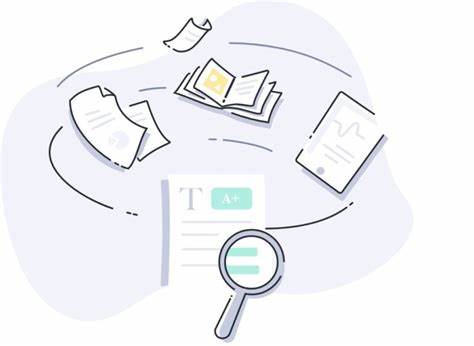
Are there different types of plagiarism checker
Plagiarism is a serious concern in the academic and content creation world. As the digital landscape continues to grow, the need for effective plagiarism detection tools has become more essential than ever. Plagiarism checkers are designed to help writers, educators, and researchers ensure the originality of their work and maintain the integrity of their content. In this article, we’ll explore the different types of plagiarism checker available, how they work, and which one might be the best fit for your needs.
Table of Contents
- Introduction
- Understanding Plagiarism Checkers
- Types of Plagiarism Checkers
- Online Plagiarism Checkers
- Desktop Plagiarism Checkers
- Grammarly and Similar Tools
- Plagiarism Detection Software for Institutions
- Custom Plagiarism Detection Solutions
- How Plagiarism Checkers Work
- Text Comparison
- Database Scanning
- Algorithmic Analysis
- Choosing the Right Plagiarism Checker
- User-Friendly Interface
- Database Size and Sources
- Accuracy and Sensitivity
- Additional Features
- Benefits of Using Plagiarism Checkers
- Promotes Originality
- Saves Time and Effort
- Educational Tool
- Limitations of Plagiarism Checkers
- Inability to Detect Paraphrasing
- False Positives
- Frequently Asked Questions (FAQs)
- What is plagiarism?
- Can plagiarism checkers detect all types of plagiarism?
- Are there free plagiarism checkers available?
- How often should I use a plagiarism checker?
- Can I use multiple plagiarism checkers for the same document?
- Conclusion
Introduction
With the proliferation of digital content and the ease of copying and pasting, plagiarism has become a prevalent issue. Whether you’re a student working on an essay, a content creator crafting blog posts, or a researcher preparing a scholarly article, ensuring the originality of your work is crucial. Plagiarism not only compromises your credibility but also undermines the value of authentic creation.
Understanding Plagiarism Checkers
Plagiarism checkers are specialized tools designed to compare a given piece of text against a vast database of existing content. They identify similarities and matches between the submitted text and existing sources, highlighting potential instances of plagiarism. These tools play a vital role in maintaining the integrity of written material and upholding ethical writing practices.
Types of Plagiarism Checkers
Online Plagiarism Checkers
Online plagiarism checker are web-based tools that are easily accessible and user-friendly. They allow users to upload their content, which is then scanned against a comprehensive database of online sources, academic journals, publications, and other written materials.
Desktop Plagiarism Checkers
Desktop plagiarism checkers operate similarly to their online counterparts but are software applications that need to be downloaded and installed on a computer. They offer the advantage of working offline and might provide additional features like document organization and offline database access.
Grammarly and Similar Tools
Grammarly, a widely used writing assistant tool, offers a plagiarism checker as one of its features. Similar tools combine grammar and spelling checks with plagiarism detection, making them convenient for writers looking for an all-in-one solution.
Plagiarism Detection Software for Institutions
Educational institutions and businesses often require more robust plagiarism detection solutions. Specialized software is designed to handle large volumes of content and provide in-depth reports for educators and administrators.
Custom Plagiarism Detection Solutions
Some organizations require tailor-made plagiarism detection systems that align with their specific needs. Custom solutions can be designed to integrate with existing workflows and databases, offering a high level of accuracy and customization.
How Plagiarism Checkers Work
Plagiarism checkers employ various techniques to identify similarities between submitted text and existing content.
Text Comparison
Plagiarism checkers use algorithms to compare the submitted text with a vast database of sources. The tool highlights phrases and sentences that match existing content, providing a percentage of similarity.
Database Scanning
Plagiarism checkers rely on extensive databases that contain academic papers, websites, publications, and other written material. The tool scans these databases to identify matches and similarities.
Algorithmic Analysis
Sophisticated algorithms analyze the structure, syntax, and language of the submitted text. They can detect paraphrased content and disguised plagiarism by examining sentence patterns and word choices.
Choosing the Right Plagiarism Checker
Selecting the appropriate plagiarism checker depends on several factors.
User-Friendly Interface
For casual users, an intuitive and user-friendly interface can make the plagiarism checking process smoother and more efficient.
Database Size and Sources
The comprehensiveness of the database is crucial for accurate results. A larger database that includes a wide range of sources increases the likelihood of identifying potential matches.
Accuracy and Sensitivity
A reliable plagiarism checker should strike a balance between accuracy and sensitivity. It should accurately identify instances of plagiarism without generating an excessive number of false positives.
Additional Features
Some plagiarism checkers offer additional features such as citation checks, grammar suggestions, and writing style analysis, enhancing their overall utility.
Benefits of Using Plagiarism Checkers
Promotes Originality
Plagiarism checkers encourage writers to produce original content by raising awareness about the importance of citing sources and respecting intellectual property.
Saves Time and Effort
Manually checking for plagiarism can be time-consuming. Plagiarism checkers automate the process, allowing writers to focus on creating instead of verifying originality.
Educational Tool
Plagiarism checkers serve as educational tools, helping writers understand proper citation practices and how to avoid unintentional plagiarism.
Limitations of Plagiarism Checkers
Inability to Detect Paraphrasing
While plagiarism checkers are effective at identifying verbatim copying, they may struggle to detect sophisticated paraphrasing.
False Positives
Plagiarism checkers can sometimes flag content as plagiarized when it’s not, especially when dealing with common phrases or information widely available.
Frequently Asked Questions (FAQs)
1. What is plagiarism?
Plagiarism refers to the act of using someone else’s work, ideas, or intellectual property without proper attribution or permission.
2. Can plagiarism checkers detect all types of plagiarism?
No, plagiarism checkers may not detect subtle forms of plagiarism, such as paraphrasing or using synonyms to replace words.
3. Are there free plagiarism checkers available?
Yes, many plagiarism checkers offer a free version with limited features. More advanced features may require a subscription.
4. How often should I use a plagiarism checker?
It’s a good practice to use a plagiarism checker every time you create new content or when submitting important documents.
5. Can I use multiple plagiarism checkers for the same document?
Yes, using multiple plagiarism checkers can provide a more comprehensive analysis and reduce the chances of overlooking potential plagiarism.
Conclusion
In a digital age where information is easily accessible, plagiarism checkers play a vital role in upholding academic and creative integrity. By choosing the right type of plagiarism checker and using it effectively, writers can ensure that their work is original, properly attributed, and free from ethical concerns. So, whether you’re a student, a professional, or a content creator, harness the power of plagiarism checkers to maintain the authenticity of your writing.
Read more: Click here



